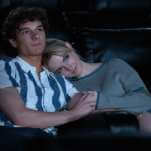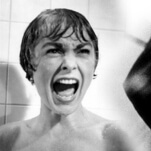It’s tempting to picture a bunch of long-haired ruffians turning the particle accelerators on themselves in David Kaiser’s new book, even if the eponymous “hippies” were just a group of scientists slightly apart from mainstream physics. Still, Kaiser argues convincingly for their role as provocateurs in How The Hippies Saved Physics: Science, Counterculture, And The Quantum Revival.
According to Kaiser, physics was headed over a postwar cliff of dreary practicality before a loose conglomerate of theoretical physicists dragged it back. The combination of Department Of Defense-led technological advances and Cold War paranoia drove enrollments in college physics programs up in the 1950s and ’60s, but many professors found it easier with such large class loads to focus on solution-driven curricula—producing even more physicists oriented toward mechanics and away from theories, even as popular interest in the subject waned. Enter a number of adjunct professors and grad students, most based in the Bay Area, who picked up where Einstein left off by forming discussion circles like the Fundamental Fysiks and the Physics/Consciousness Research Group. Championing Irish quantum-theory pioneer John Bell, they sought funding to expand on his work after hours in groundbreaking scientific papers and pop-culture works like The Tao Of Physics.
Kaiser reliably breaks the hippies’ experiments and theories down into layman’s terms, but his emphasis is a little misplaced: The scientists driving the “quantum revival” were on the fringes career-wise, but with their advanced degrees and publishing credits, they definitely weren’t outsiders. Their extracurricular activities defined them only so far as they befriended countercultural figures like Ira Einhorn and EST founder Werner Erhard. In these cases, it was the hippies pursuing the scientists for their cred, and sometimes getting it. For another thing, psi research wasn’t that far out of mainstream science—the CIA was already funding telepathy experiments, including projects out of Stanford University.
While they may not have self-identified as or participated in that subcultural wave, the scientists who defended the place of quantum physics used their training to push back against dry reasoning—a quest How The Hippies Saved Physics imbues with the joy of nerdy discovery. The transition between a view of physics limited to practical applications and one in which less-solvable questions predominated might have happened anyway, but Kaiser successfully makes his case that younger generations of scientists who were at least open to those questions helped usher it in.








































